 STRATEGIC SCIENCE INVESTMENT FUNDING (SSIF)-
FINAL PROJECT REPORT FOR FY2018
ESR is fully accountable for Strategic Science Investment Funding (SSIF).
Information in this report will be used to demonstrate the value of ESR SSIF and to
quantify the benefit from the investment. It will also inform future investment of
SSIF.
Your Final Report will be used to populate the Board Science Report for FY2018.
STRATEGIC SCIENCE INVESTMENT FUNDING (SSIF)-
FINAL PROJECT REPORT FOR FY2018
ESR is fully accountable for Strategic Science Investment Funding (SSIF).
Information in this report will be used to demonstrate the value of ESR SSIF and to
quantify the benefit from the investment. It will also inform future investment of
SSIF.
Your Final Report will be used to populate the Board Science Report for FY2018.
Please remember if you don’t inform the Research Office we can’t inform MBIE or
the Board and your work will not have the impact it deserves.
➢
Please answer every question.
➢
Please complete and email, in document form, to [Withheld under section
9(2)(a) of the OIA] @esr.cri.nz by Friday 20th July 2018.
Project title:
Centre for Integrated Biowaste Research
Project leader(s):
Maria J Gutierrez-Gines
Duration: (e.g. “ Continuing, Year 2 of 3” )
Year 1 of 3
Budget (amount allocated per year and total spent) Allocated: $1,161,669 + $297,000
Spent: $1,045,338 + $297,000
List the 1) capabilities and 2) new collaborations developed in the project and by whom
(include students)
New capabilities:
- Proteomic capability has been established for identification of enzymes capable of virus
inactivation (Amanda Inglis, PhD).
- Generate environmental fate, transport and effects data for viruses and emerging contaminants
(Louise Weaver, Judith Webber, Amanda Inglis, Maria Jesus Gutierrez-Gines).
- Optimised methods for analysing Laccase activity, tyrosinase activity, lignin peroxidase activity
and manganese peroxidase activity in aqueous samples, including wastewater (Maria Gutierrez
Gines, Judith Webber, and Louise Weaver).
- A new ICP-MS that will be able to analyse isotopes of trace elements in biowastes, allowing a
better understanding of their fluxes in the soil – plant system (Brett Robinson).
- Optimised method for enumerating
Campylobacter spp. in soil, biowaste and complex samples
(Izzie Alderton).
- Gas chromatography mass spectrometry method to analyse multiple classes of alkylphosphate
1
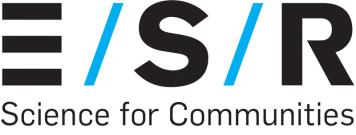
and polybrominated flame retardants. Establishment of passive sampling device (PSD) sampling
capability to enable time integrated sampling of EOCs and other organic contaminants from
aqueous samples (Grant Northcott).
- Jianming Xue, through collaboration with Prof Zhaojun Li and his team at the Chinese Academy of
Agricultural Sciences (CAAS), developed an enhanced antibiotic degradation manure composting
system by using novel fungal strains or bacterial consortia and incorporating biochar or other
functional materials. This will encourage the beneficial use of animal manures or biosolids in
agriculture and forestry land and effectively reduce the point-source and non-point source
pollution of residual antibiotics, which causes the spread and impact of antibiotic resistance.
- Development of the Comet assay in the copepod model to assess genotoxicity in complex
mixtures. The method has been validated using contaminated estuarine sediment samples and the
results published. We have developed and validated the use of the copepod model for
multigenerational exposure experiments as it responds well to DNA-methylation. A manuscript has
been submitted (Louis Tremblay).
- Mārie McCarthy (Ngati Whakaue, Te Whanau-a-Ruataupare, Ngati Whitikaupeka, Ngati
Tamakopiri) has joined the social and cultural team and brings capability in education and kaupapa
Māori research. Marie’s previous role was lecturer at Te Whare Wananga o Awanuirangi (Lisa
Langer).
- Development of a monitoring system for assessing the success of riparian plantings. Maria
Gutierrez Gines, Robyn Simcock, Brett Robinson, in collaboration with EcoQuest.
New collaborations:
- Ecotoxicology team has initiated a collaboration with Dr. Bradley Clark of RMIT University in
Melbourne to develop a survey of polyfluorinated alkyl substances (PFAS,PFOS, PFOA) in biosolids
from NZ wastewater treatment plants (Grant Northcott & Louis Tremblay).
- Grant Northcott is continuing discussions with Tonkin + Taylor to identify and pursue future
collaboration opportunities with CIBR, particularly with the future application of newly developed
PSD capability.
- New collaboration has been built between Jianming Xue at CIBR and Prof Baisuo Zhao at the
Chinese Academy of Agricultural Sciences for the 2018 MBIE Catalyst Strategic Fund bidding.
- Grant Northcott and Louis Tremblay are on the organising committee of the What’s in Our Water
Symposium in Canberra
(www.wiow.com.au) where Jinny Baker will give a keynote address.
[Withheld under section 9(2)(a) of the OIA] (Environment Southland) will coordinate a small by
invitation only workshop on the last day of the symposium to develop the Australasian Directive
Framework. We are working closely with colleagues
[Withheld under section 9(2)(a) of the OIA]
(CSIRO, Adelaide) to generate opportunities for Australasian scientists to work more closely
together and maximise capability and expertise.
- A collaboration between the CIBR Social and Cultural and the University of Canterbury Māori
Research teams has enabled a successful bid ($60k) to Ngā Pae o Te Māramatanga that will scope a
further bid to the Marsden Fund and/or National Science Challenge 1 and 11 on Kaitiakitanga and
decolonizing methodologies for Māori succeeding as Māori in education. Five hui (1 @ ESR, 3 @
UC, 1 @ Rapaki) have been held this year refining the goals to look into educational outcomes for a
sustainable urban pā wānanga which has an emphasis on kaitiakitanga and eco-literacy.
- Robyn Simcock and Bathurst Resources. First, Met BT mining environmental & planning
[Withheld
under section 9(2)(a) of the OIA] to discuss biosolids 2016/26 research application to the new
owner of Solid Energy’s Waikato coal mine assets, with the objective of helping assessment of
business case to re-activate biosolids use for mine rehabilitation, with extension to native
ecosystems (previously limited to pasture and radiata pine). The biosolids case needs to be
2

activated before the consent lapsed. Second, met
[Withheld under section 9(2)(a) of the OIA] of
Bathurst Resources; the latter two are responsible for rehabilitation at NZ’s largest export coal
mine (some 800 ha requiring rehabilitation), Stockton. Solid Energy are also NZ’s largest user of
municipal biosolids for rehabilitation. We reviewed biosolids trials and practice on site since 2012,
and explored research to meet future needs.
-
[Withheld under section 9(2)(a) of the OIA], GHD approached Robyn Simcock in June 2017 by to
supply desk top evaluation of plants and hydromulching method suitable to trial to revegetate Te
Awamutu oxidation ponds as part of decommissioning. We developed ideas with Jacqui Horswell
and Brett Robinson into July 2017 but the trial did not go ahead.
-Robyn Simcock approached by Brian Smith in September 2017, to develop a WasteMinz or
Auckland Council application to trial separation and reuse of the organic component of road
sweepings (which have elevated Zn) to reduce landfill costs and provide a useful organic soil
amendment using an Inverell Composting System. Landfill currently costs $150/Tonne.
- Query on use of biowastes – organic mulches for use in rain gardens and swales (Boffa
Miskell/Stevensons – testing (Robyn Simcock).
- Rob Tinholt, Watercare. Jacqui Horswell brought Rob to meet researchers at Lake Waikare
workshop. Followed up by Robyn and Brett in Auckland late 2017, and again by Robyn in early
2018 and June 2018.
- Australian CRC for High-performance soils – Jo Cavanagh attended a scoping workshop for
programme 3 of the CRC, which includes a focus on developing new fertilisers derived from waste,
primarily organic waste. The CRC has only just commenced and Jo and Robyn will maintain
connection to identify opportunities for joint research.
- Three field sites with 150,000 native trees are planted or are being currently planted in Lake
Waikare, Lake Wairarapa and Levin, and will be kept in perpetuity for further investigation of
nutrient and pathogen movement in soil and in plant root systems, and effects of land-application
of biowaste. CIBR team at ESR, University of Canterbury, LEI, with the help of all CIBR collaborators.
Successful students:
[Withheld under section 9(2)(a) of the OIA]
[Withheld under section 9(2)(a) of the OIA]
[Withheld under section 9(2)(a) of the OIA]
[Withheld under section 9(2)(a) of the OIA]
[Withheld under section 9(2)(a) of the OIA]
[Withheld under section 9(2)(a) of the OIA]
[Withheld under section 9(2)(a) of the OIA]
[Withheld under section 9(2)(a) of the OIA]
[Withheld under section 9(2)(a) of the OIA]
[Withheld under section 9(2)(a) of the OIA]
[Withheld under section 9(2)(a) of the OIA]
[Withheld under section 9(2)(a) of the OIA]
[Withheld under section 9(2)(a) of the OIA]
Current students:
[Withheld under section 9(2)(a) of the OIA]
[Withheld under section 9(2)(a) of the OIA]
[Withheld under section 9(2)(a) of the OIA]
[Withheld under section 9(2)(a) of the OIA]
3
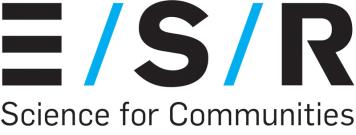 [Withheld under section 9(2)(a) of the OIA]
[Withheld under section 9(2)(a) of the OIA]
[Withheld under section 9(2)(a) of the OIA]
[Withheld under section 9(2)(a) of the OIA]
[Withheld under section 9(2)(a) of the OIA]
[Withheld under section 9(2)(a) of the OIA]
[Withheld under section 9(2)(a) of the OIA]
[Withheld under section 9(2)(a) of the OIA]
[Withheld under section 9(2)(a) of the OIA]
Provide a maximum 200-word summary of Vision Matauranga activities, actions,
collaborations in the project as a result of this SSIF investment.
The Social and cultural team research has dual aims:
a. To provide Te Pā o Rākaihautū school’s Board of Trustees with feedback and analysis to help
capture the dynamics of the Pā Wānanga model. This will enable the school to build a viable
evaluation framework to help them identify the significant changes being seen in pononga
(students) and their whānau, and to capture and measure these changes for the purpose of the
schools self-assessment and development.
b. With Te Pa’s guidance the data will extend insights on how a Pā Wānanga model of education
and community engagement can support sustainable transformation and leadership in local
environmental management. The insights from the Pā Wānanga model will help identify culturally
informed theories of sustainable change, and will identify points of leverage and changes needed
in the wider institutional system that will better support the new forms of sustainable
environmental change and leadership being sought within the Pā Wānanga model.
List the external research or grant proposals submitted (include $ value) and any
research funding obtained that have been made possible as a result of SSIF investment
in the project; include proposals awaiting funding decisions:
Successful/
Funding
Funding body Project title
declined/
requested
pending
[Withheld
[Withheld under section 9(2)(b)(ii) of
[Withheld
Pending
under section
the OIA]
under section
9(2)(b)(ii) of
9(2)(b)(ii) of
the OIA]
the OIA]
Te Pā o Rākaihautū – Wetekia kia
Ngā Pae o te
rere: Kaitiakitanga and decolonizing
$60,000
Successful
Māramatanga
methodologies for Māori succeeding
as Māori in education.
MBIE
Emerging organic contaminants –
$5,607,675
Successful
Endeavour
managing risk for a safer NZ
(CAWX1708)
Fund -
environment and economy
Research
Programmes
BRANZ + ESR
Greywater quality from residential
$84,000
ESR
SSIF
and non-residential sources
½ BRANZ
successful
½ ESR SSIF
BRANZ
successful
4
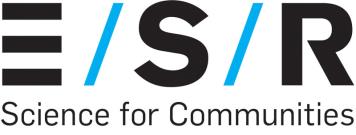
Envirolink
National strategy for managing
$ 20,000
Successful
medium
emerging organic contaminants
(1785-
advice grant
ESRC284)
with
Environment
Southland
[Withheld
[Withheld under section 9(2)(b)(ii) of
[Withheld
Unsuccessful
under section
the OIA]
under section
9(2)(b)(ii) of
9(2)(b)(ii) of
the OIA]
the OIA]
ESR SSIF Fund Centre for Integrated Biowaste
$1,413,085
Successful
Research - continuation
[Withheld
[Withheld under section 9(2)(b)(ii) of
[Withheld
Unsuccessful
under section
the OIA]
under section
9(2)(b)(ii) of
9(2)(b)(ii) of
the OIA]
the OIA]
[Withheld
[Withheld under section 9(2)(b)(ii) of
[Withheld
Pending
under section
the OIA]
under section
9(2)(b)(ii) of
9(2)(b)(ii) of
the OIA]
the OIA]
[Withheld
[Withheld under section 9(2)(b)(ii) of
[Withheld
Pending
under section
the OIA]
under section
9(2)(b)(ii) of
9(2)(b)(ii) of
the OIA]
the OIA]
[Withheld
[Withheld under section 9(2)(b)(ii) of
[Withheld
Unsuccessful
under section
the OIA]
under section
9(2)(b)(ii) of
9(2)(b)(ii) of
the OIA]
the OIA]
ESR-Pioneer
30 years of effluent land-application
$30,000
Successful
fund
ESR-Pioneer
Enzyme discovery
$120,000
Successful
fund
Young
Wastewater enzymes for virus
[Withheld
Successful
Innovator
removal
under section
Award -
9(2)(a) of the
KiwiNet.
OIA]
[Withheld
[Withheld under section 9(2)(b)(ii) of [Withheld
Not
under section
the OIA]
under section
successful
9(2)(b)(ii) of
9(2)(b)(ii) of
the OIA]
the OIA]
[Withheld
[Withheld under section 9(2)(b)(ii) of
[Withheld
Pending
under section
the OIA]
under section
9(2)(b)(ii) of
9(2)(b)(ii) of
the OIA]
the OIA]
- Louis and Grant are exploring options with CSIRO colleagues to fund Australasian research
projects on micro-pollutants. This involves the revision of the Black Mountain Declaration to
develop the Australasian Framework to manage micro-pollutants and explore opportunities to
attract funding from Australia and NZ (e.g. Australian Research Council/MBIE).
5
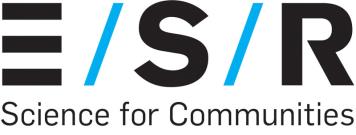
- Te Pā o Rākaihautū has applied to TPK for funding with advice from the CIBR social and cultural
team to build a novel circular vermicomposting unit. A prototype has been designed and made and
received support from Te Pā staff and Board. The unit, when operational will be a working
biowaste composter, an educational tool and will display kaitiakitanga in practice.
List all external research revenue obtained seeded by this SSIF project:
Other contracts and non-contestable research funds
Organisation
Funding type
Title
Amount
name
[Withheld
[Withheld under section
[Withheld
under section
9(2)(b)(ii) of the OIA]
under section
Contract
9(2)(b)(ii) of the
9(2)(b)(ii) of
OIA]
the OIA]
Research co-
[Withheld
[Withheld under section
[Withheld
fund
under section
9(2)(b)(ii) of the OIA]
under section
9(2)(b)(ii) of the
9(2)(b)(ii) of
OIA]
the OIA]
[Withheld
[Withheld under section
[Withheld
Research co-
under section
9(2)(b)(ii) of the OIA]
under section
fund
9(2)(b)(ii) of the
9(2)(b)(ii) of
OIA]
the OIA]
[Withheld
[Withheld under section
[Withheld
under section
9(2)(b)(ii) of the OIA]
under section
Contract
9(2)(b)(ii) of the
9(2)(b)(ii) of
OIA]
the OIA]
[Withheld
[Withheld under section
[Withheld
under section
9(2)(b)(ii) of the OIA]
under section
Subcontract
9(2)(b)(ii) of the
9(2)(b)(ii) of
OIA]
the OIA]
[Withheld
[Withheld under section
[Withheld
under section
9(2)(b)(ii) of the OIA]
under section
Subcontract
9(2)(b)(ii) of the
9(2)(b)(ii) of
OIA]
the OIA]
[Withheld
[Withheld under section
[Withheld
under section
9(2)(b)(ii) of the OIA]
under section
Subcontract
9(2)(b)(ii) of the
9(2)(b)(ii) of
OIA]
the OIA]
[Withheld
[Withheld under section
[Withheld
under section
9(2)(b)(ii) of the OIA]
under section
Contract
9(2)(b)(ii) of the
9(2)(b)(ii) of
OIA]
the OIA]
[Withheld
[Withheld under section
[Withheld
Contract
under section
9(2)(b)(ii) of the OIA]
under section
6
 9(2)(b)(ii) of the
9(2)(b)(ii) of
OIA]
the OIA]
[Withheld
[Withheld under section
[Withheld
under section
9(2)(b)(ii) of the OIA]
under section
9(2)(b)(ii) of the
9(2)(b)(ii) of
OIA]
the OIA]
[Withheld
[Withheld under section
[Withheld
under section
9(2)(b)(ii) of the OIA]
under section
Contract
9(2)(b)(ii) of the
9(2)(b)(ii) of
OIA]
the OIA]
[Withheld
[Withheld under section
[Withheld
Research
under section
9(2)(b)(ii) of the OIA]
under section
Contract
9(2)(b)(ii) of the
9(2)(b)(ii) of
OIA]
the OIA]
Contract
[Withheld
[Withheld under section
[Withheld
under section
9(2)(b)(ii) of the OIA]
under section
9(2)(b)(ii) of the
9(2)(b)(ii) of
OIA]
the OIA]
Research co-
[Withheld
[Withheld under section
[Withheld
fund
under section
9(2)(b)(ii) of the OIA]
under section
9(2)(b)(ii) of the
9(2)(b)(ii) of
OIA]
the OIA]
List the 1) peer reviewed publications, 2) conference presentations (oral) 3) conference
presentations (poster), 3) external presentations other than conference that were
developed from this SSIF project.
1. Peer reviewed publications
Park, J.B.K.,
Weaver, L., Davies-Colley, R.J., Stott, R., Williamson, W., Mackenzie, M., McGill, E., Lin,
S.,
Webber, J., Craggs, R.J. Comparative removal of faecal indicators and viral pathogens in
wastewater treatment pond mesocosms. Submitted to Water Research June 2018.
Yao, R.T.,
Langer, E.R. and Leckie, A.B. Household preferences on the choice of handwashing soap:
Are emerging contaminants considered? Manuscript under external review for submission to
Science of the Total Environment.
Cavanagh JE, Trought K, Mitchell C,
Northcott G, Tremblay LA. 2018. Assessment of endocrine
disruption and oxidative potential of bisphenol-A, triclosan, nonylphenol, diethylhexyl phthalate,
galaxolide, and carbamazepine, common contaminants of municipal biosolids. Toxicology In Vitro
48:342-349, DOI 10.1016/j.tiv.2018.02.003.
Welikala D, Hucker C, Hartland A,
Robinson BH, Lehto NJ. 2018. Trace metal mobilization by
organic soil amendments: insights gained from analyses of solid and solution phase complexation
of
cadmium,
nickel
and
zinc.
Chemosphere,
199:
684-693.
DOI
https://doi.org/10.1016/j.chemosphere.2018.02.069.
7
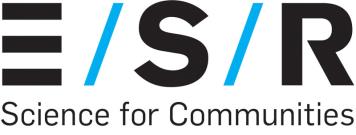 Robinson BH
Robinson BH, Yalamanchali R, Reiser R, Dickinson NM (2018). Lithium as an emerging
environmental contaminant: Mobility in the soil-plant system. Chemosphere 197, 1-6.
Zhong H, Kim YN, Smith C
, Robinson BH, Dickinson NM (2017). Seabird guano and phosphorus
fractionation in a rhizosphere with earthworms. Applied Soil Ecology 120, 197-205.
Gutierrez-Gines MJ,
Robinson BH, Esperschuetz J, Madejon E,
Horswell J, McLenaghen R (2017).
Potential use of biosolids to reforest degraded areas with New Zealand native vegetation. Journal
of Environmental Quality 46(4), 906-914.
Al Mamun S, Lehto NJ, Cavanagh J, McDowell R, Ak tar M, Benyas E,
Robinson BH (2017). Effects of
lime and organic amendments derived from varied source materials on cadmium uptake by potato.
Journal of Environmental Quality 46(4), 836-844.
Paramashivam D, Dickinson NM, Clough TJ,
Horswell J, Robinson BH (2017). Potential
environmental benefits from blending biosolids with other organic amendments before application
to land. Journal of Environmental Quality 46(3), 481-489.
Esperschuetz J, Balaine N, Clough T, Bulman S, Dickinson NM,
Horswell J, Robinson BH (2017). The
potential of L. scoparium, K. robusta and P. radiata to mitigate N-losses in silvopastural systems.
Environmental Pollution 225, 12-19.
Esperschuetz J, Anderson C, Bulman S, Katamian O, Horswell J, Dickinson NM,
Robinson BH (2017).
Response of Leptospermum scoparium, Kunzea robusta and Pinus radiata to contrasting
biowastes. Science of the Total Environment 587-588, 258-265.
Kim YN,
Robinson BH, Horswell JH, Boyer S, Dickinson NM (2017). Impacts of endemic Maoridrilus
earthworms (Megascolecidae) in biosolids-amended soil. Journal of Environmental Quality 46, 177-
184.
Wang, M.,
Xue, J., Horswell, J., Kimberley, M.O. and Huang, Z., 2017. Long-term biosolids
application alters the composition of soil microbial groups and nutrient status in a pine plantation.
Biology and Fertility of Soils, 53 (7), 799–809 (Rabbit Island work)
Scott PD, Coleman HM, Khan S, Lim R, McDonald JA, Mondon J, Neale PA, Prochazka E,
Tremblay
LA, Warne MSt.J, and Leusch FDL. 2018. Histopathology, vitellogenin and chemical body burden in
mosquitofish (Gambusia holbrooki) sampled from six river sites receiving a gradient of stressors.
Science of the Total Environment 616–617: 1638–1648.
Tremblay LA, Gadd JB,
Northcott GL. 2018. Steroid estrogens and estrogenic activity are
ubiquitous in dairy farm watersheds regardless of effluent management practices. Agriculture,
Ecosystems and Environment 253: 48–54.
Charry MP, Keesing V, Costello M, Tremblay LA. 2018. Assessment of the ecotoxicity of urban
estuarine sediment using benthic and pelagic copepod bioassays. PeerJ 6:e4936
https://doi.org/10.7717/peerj.4936. Gooneratne, R., Saleeb, N.,
Robinson, B., Cavanagh, J., Ross, J., Lasching, A., Wellby, M., 2017.
8
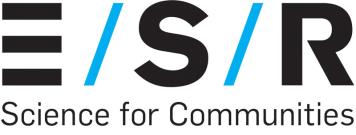
Biochemical- and neuro-toxicity of silver nanoparticle and silver nitrate in soil to Aporrectodea
calginosa earthworms. Toxicology Letters 280, S203-S203
Leusch, F.D.L, Aneck-Hahn, N.H.,
Cavanagh, J.E., Du Pasquier, D., Hamers, T., Hebert, A., Neale,
P.A., Scheurer, M., Simmons, S.O., Schriks, M., 2018. Comparison of in vitro and in vivo bioassays to
measure
thyroid
hormone
disrupting
activity
in
water
extracts.
Chemosphere,
https://doi.org/10.1016/j.chemosphere.2017.10.109
2. Conference Presentations
Xue J, Bakker M. 2017. Effect of vermicomposted biosolids on seedling growth and nutrient uptake
by exotic and native tree species. In: Proceedings of the 18th Plant Nutrition Colloquium in
Copenhagen, Denmark on 21-24 August 2017.
Tremblay L, Northcott G, Sevicke-Jones G,
Ataria J. 2017. Development of a National Strategy to
manage emerging contaminants in New Zealand. In: SETAC Australasia Conference - The role of
environmental toxicology and chemistry in a changing environment, Gold Coast, Australia, 4-6
September.
Tremblay L. 2017. Micro-contaminants- risk and solutions. In: CSIRO Land and Water, Adelaide,
Australia, 8 September.
Gutierrez Gines MJ, Nikau T,
Horswell J, Robinson B, Tupuhi G, Taylor M, Moana T, Hopkins A.
2017. Manuka-dominated ecosystems to improve water quality and provide economic and social
return to the Lake Waikare catchment. In: Integrating multiple aquatic values. 5th biennial
symposium.
Xue J, Bakker M. 2017. Effect of vermicomposted biosolids on seedling growth and nutrient uptake
by exotic and native tree species. In: Proceedings of the 18th Plant Nutrition Colloquium in
Copenhagen, Denmark on 21-24 August 2017.
Sitz C, Gutierrez-Gines MJ, Halford S, Alderton I, Ambrose V, Horswell J, Cass S, Lowe H, Saidy G,
Robinson B. 2018. Native Vegetation For The Land-Application Of Treated Municipal Wastewater.
In: New Zealand Land Treatment Collective Annual Conference on 7 – 9 March 2018 in Rotorua.
Clemens, H. 2018. Virus transport through soil from on-site wastewater treatment systems. In:
New Zealand Land Treatment Collective Annual Conference on 7 – 9 March 2018 in Rotorua.
Xue, J. 2018. Benefits and risks of forest-based land application of biosolids. In: New Zealand Land
Treatment Collective Annual Conference on 7 – 9 March 2018 in Rotorua.
Guyon A, Smith K, Charry M,
Champeau O,
Tremblay L. 2018. Chronic exposure to sub-lethal
concentrations of benzophenone and diclofenac influence DNA methylation levels and
reproductive success in a marine copepod. A poster presented at the Marine Evolution 2018
conference, Strömstad, Sweden, 15-17 May.
Guyon A, Smith KF, Charry M,
Champeau O,
Tremblay LA. 2018. «L’exposition chronique à des
concentrations sous-létales de benzophénone et diclofénac influence la méthylation d’ADN et la
reproduction d’un copépode marin. In : Colloque EcoBIM, Bordeaux, France, 22-25 May.
9
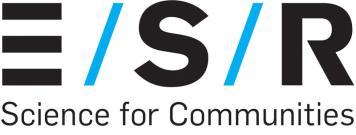
Jinny Baker presented a paper at the NZ Environmental Education Conference, 18-20 April 2018,
Wellington - V.E. Baker, J. Ataria, J. Horswell, E.R. Langer, A. Leckie (2018) Schools and community
engagement in science: Expanding a sustainable focus.
Jinny Baker - Abstract accepted for 4S Society for Social Studies of Science conference:
Transdisciplinary theme, Sydney 2018. Re-configuring relationships and practice for
sustainable change.
CIBR Newsletter articles:
Alan Leckie, Jamie Ataria, Lisa Langer, Joanna Goven, Jinny Baker (2018). Social and
Cultural team update, CIBR newsletter Issue No. 17, February 2018. P3.
Leckie, A., Langer, L., Ataria, J., Goven, J., Baker, J., McCarthy, M. (2018). Social and
Cultural team update, CIBR newsletter Issue No. 18, June 2018. P7-8.
3. External Presentations
Ambrose V, Alderton I, Villanueva S. Reuse of greywater and microbial testing. May 2018.
Wanganui City College visit to ESR at Kenepuru Science Centre.
Gutierrez-Gines M, McIntyre C, Lense O, Mishra M, Seyedalikhani S, McLenaghen R,
Robinson B.
2017. A lysimeter experiment and field trial to determine options for the beneficial reuse of
wastewater from Duvauchelle and Akaroa, Banks Peninsula.
Report prepared for Christchurch City Council by Lincoln university -
https://www.ccc.govt.nz/assets/Documents/Services/Wastewater/A-lysimeter-experiment-and-field-trial-to-
determine-options-for-the-beneficial-reuse-of-wastewater-from-Duvauchelle-and-Akaroa-Banks-Peninsula-
Brett-Robinson-Lincoln-University-June-2017.pdf
Gutierrez Gines MJ,
Robinson B, Prosser J, Esperschuetz J, Mishra M,
Horswell J. 2017. Manuka
planting for water quality. Water New Zealand, Nov Dec 2017, pp 63-66.
Alderton, I, Villianueva S. Stream Health and Contaminants. May 2018. Hataitai School visit at
Kenepuru stream, Porirua.
Ambrose V, Alderton I, Villanueva S. Up the Pipe. May 2018. BioBlitz day at Hampton Hill School,
Tawa.
Ambrose V, Alderton I. May 2018. Environmental Science. Careers evening at Tawa college.
Ambrose V, Alderton I, Villanueva S. Mānuka properties & possums. July 2018. Aotea College
school visit to ESR at Kenepuru Science Centre.
Grant Northcott and Louis Tremblay. 2018. Sources and risks of PFAS chemicals in New Zealand.
WasteMiNZ Live Webinar subscribers on 1/05/18.
Grant Northcott. 2018. A summary of the MBIE EOC research program and application of passive
sampling devices to assess the concentration and risk of EOCs in aquatic ecosystems. Presentation
to Tonkin and Taylor, Head Office Auckland, live streamed to nationwide offices.
10
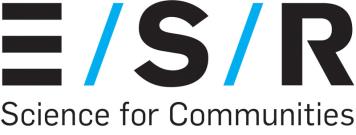
Paul Evans, CEO of WMiNZ, has asked Grant Northcott and Louis Tremblay to prepare a piece on
PFAS chemicals for a forthcoming issue of the WMiNZ magazine.
Xue, J; Wakelin, S A; Clinton, P W; Langer, E R. Understanding the risks of repeated applications of
biosolids to a managed forest. A presentation to Nelson Tasman District Council, Nelson City
Council, Nelson Regional Sewage Business Unit, and PF Olsen on 13 Jul 2017. Presentation of work
to council members.
Xue, J; Kimberley, M; Gielen, G J H; Tremblay, L; Ross, C; Horswell, J. 2018. Ecological and
environmental impacts of long-term biosolids application in a pine forest in New Zealand. A
Presentation given at Zhejiang University in Hangzhou, China on 18 April 2018.
Xue, J; Kimberley, M; Gielen, G J H; Tremblay, L; Ross, C; Horswell, J. 2018. Ecological and
environmental impacts of long-term biosolids application in a pine forest in New Zealand. A
Presentation given at Shaoxing University in Shaoxing, China on 19 April 2018.
Tremblay L. Micro-contaminants- risk and solutions. 2017. CSIRO Land and Water, Adelaide,
Australia, 8 September.
Xue, J; Wakelin, S A; Clinton, P W;
Langer, E R (2017). Understanding the risks of repeated
applications of biosolids to a managed forest. Presentation to Tasman District Council, Nelson
Regional Sewage Business Unit and PF Olsen, Nelson, 13 July 2017.
For this project’s SSIF investment, list the resulting:
1.
Commercial benefits 2.
New products or services made possible (both actual and potential) 3.
Estimated revenue, new clients and timeframe for achieving these
[Withheld under section 9(2)(b)(ii) of the OIA]
11
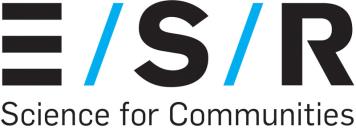 Our goal for SSIF investments for FY2018 was to increase ESR capabilities. Please
Our goal for SSIF investments for FY2018 was to increase ESR capabilities. Please
provide details on how your SSIF funded project contributed to the following
areas:
1. Developing our capability in
Genomics and Informatics 2. Developing our capability in
One Health 3. Developing our capability in
Data to Wisdom 4. Developing our capability in
Evidence-based Policing
1. The CIBR team is continuing to use new and novel methods for identification of the
microbial diversity present in soil and wastewater and their role in removal of
contaminants – both biological and chemical. In this we are developing proteomic
and transcriptomic approaches to identify function. The CIBR group has developed
expertise in metabarcoding methodologies and validated the approach for oils and
gas, resulting in four scientific publications.
2. We are investigating sustainable and viable approaches for wastewater treatment to
remove pathogens and emerging organic contaminants. The objective of our
research is to investigate safe and culturally acceptable solutions for the land
application of biowaste, without affecting the public or the environmental health.
We are also continuing research in low economic areas in the Pacific to optimise
wastewater treatment.
3. The main strength of CIBR is the ability to investigate in a multidisciplinary and
holistic way the treatment, management, and reuse options for NZ biowaste. This
collaboration is generating a large set of complex qualitative and quantitative data,
which will support scientifically informed decisions on treatment of contaminants in
biowaste, and the potential beneficial reuse. The CIBR team is aware of the
complexity in managing such complex data set, and future research will be focused
in improving our capabilities in this field.
4. Not applicable to our research.
List the Opportunities arising that can further demonstrate value from this SSIF
investment: - Development of an mānukit decision support tool (DST) that calculates the costs and
environmental benefits of having mānuka or kānuka based ecosystems when placed next to
a waterbody. The DST available on
- http://www.kiwiscience.com/manukit/index.php (Brett
Robinson).
- The CIBR expertise platform has been key to generate multiple opportunities. In the area of
micro-pollutants, the extended networks of the members have enable CIBR to secure a large
MBIE programme on emerging organic contaminants. CIBR members gave the range of
expertise required to tackle such a challenging environmental issue. We also have
established or continued to build strong international linkages with colleagues in Australia,
USA, EU and Asia that complement our expertise. CIBR enabled the group to address new
emerging issues like the risk of microplastics.
- Social and cultural team – Interview questions to capture Maori worldviews and current
12
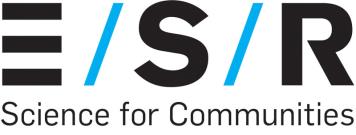
cultural practices of the Board and staff of Te Pā have been prepared. Questions will focus
on place based learning, environmental sustainability and the future achievements of the pā
wānanga. A project information sheet has also been compiled that introduces CIBR staff.
- Social and cultural team – Chemical cleaners at Te Pā have been documented in terms of
usage, storage, waste residuals and efficacy. This inventory will provide data to write future
testing protocols for current operational cleaners and alternative “green” cleaners. Organic
wastes will be documented to provide data on amounts to enable both open air and
vermicomposting practices to continue to meet school kaitiakitanga sustainability
philosophy.
- Social and cultural team – Te Pā learning village has received the green light to create a
purpose built pā wānanga in Otautahi starting in 2019-20. Concepts of environmental
architecture, onsite energy production, total biowaste reuse, green cleaning products,
sustainable education will be incorporated into the education curriculum and sustainable
practices followed. CIBR Social & Cultural will contribute to sustainable options for reusing
biowaste and reducing dependence on chemicals by researching Maori worldviews of
kaitiakitanga through a community engagement process that will lead to transformational
changes and place-based understanding.
- Social and cultural team – A previous successful CIBR case-study of community engagement
in Kaikōura that focussed on the reuse of 1500 tonnes of aged biosolids was completed in
2014. The report which provided community based solutions for the reuse was tabled and
accepted at a meeting of the Kaikōura District Council. Recommendations were deferred and
hence not acted upon by the Council. Post November 2016 earthquake Council staff have
indicated their wish to revisit the decisions of the community and proceed with the
recommendations.
- Bathurst Resources have mines all over NZ, but specifically at Stockton have a contract to
receive biosolids ex Christchurch for beneficial reuse; have been doing 10 to 30 ha of
revegetation using biosolids p.a. and this will increase over the net 10 years to a total likely
to be over 400 ha).
Executive summary – Three to four sentences giving an overview of your project and
the results obtained. This will be used for the Board Report so keep in mind that not
everyone is an expert in your field.
The Centre of Integrated Biowaste Research (CIBR) is a virtual research centre with multi-
disciplinary expertise, led by ESR, and composed of Landcare Research, Scion, Cawthron
Institute, University of Canterbury, Northcott Research Consultants, Kukupa Research, and
Lowe Environmental Impact.
The goal of CIBR is to investigate about unique and holistic solutions for the sustainable
management of biowastes (organic waste), by delivering value-added science that improves
human well-being and protects the environment.
CIBR is a long term collaboration which has proved its value over the past ten years. In the
past year (July 2017 - June 2018), CIBR has demonstrated its success by delivering
internationally recognized research, attracting external funding, and increasing the overall
capabilities of the group, which in return, will increase the reputation and opportunities of
CIBR in the future. In this year, CIBR has:
- published
16 papers in international peer reviewed scientific journals, given
10
presentations in national and international conferences, and being invited to give 14
presentations, publications and outreach activities.
- published
three newsletters.
- attracted
$6,168,895 in research funds and contracts.
13
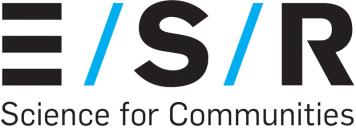
- had
13 successful students: six master students and seven hD students.
- developed and optimized
seven new chemical and biological methods for the analysis
and/or remediation of microbial and chemical contaminants in waste, water, soil and plants,
and the assessment of ecotoxicity of those contaminants.
- investigated
Māori worldviews of kaitiakitanga/guardianship, and values of whānau
(family), whakapapa (genealogy), and tikanga (tradition) in designing opportunities to reuse
and minimise biowastes.
- been acknowledged its expertise by participating in the revision of the
national guidelines
for the land application of organic waste.
Project report – Make this a stand-alone final report suitable to include in a
consolidated report to the ESR Board. Include brief background, what you did, what
you found, conclusions (max 2-3 pages). This is the opportunity to tell a success story
that ESR can use in Impact Case Studies, Briefing and other communications. The CIBR group has continued to deliver valuable science that informs environmental and
public health decision making in New Zealand. The group has continued existing successful
research topics, particularly developing methods for analysing emerging contaminants, and
their ecotoxicity, investigating beneficial reuse of biosolids, greywater, the long-term Rabbit
Island Field trial, mānuka and native plants for reducing the impacts of biowaste land
application, and a robust social and cultural program. These projects span multiple research
streams within CIBR (Soil Science, Microbiology, Ecotoxicology, Social and Cultural). Several
research projects are emerging that have strong future potential with significant
collaborative opportunities and high likely hood of bringing in more revenue for the group.
Mānuka and native species
A field trial at Duvauchelle, Bank’s Peninsula has demonstrated that some NZ-native plants
respond positively to the application of Treated Municipal Wastewater (TMW) and can
provide both economic and environmental benefits of applying TMW to land instead of into
surface waters. Land application of TMW onto NZ native plants is now being considered
nationwide and the Banks Peninsula field trial has resulted in a second CIBR field trial at “The
Pot”, Levin. The beneficial role of NZ native plants extends beyond TMW and may reduce
contaminant fluxes from agricultural systems. This is now being tested in a CIBR trial near
Lake Waikare, in the Waikato, and in Lake Wairarapa. A recent collaboration between CIBR
and the CAREX group has resulted in an MBIE bid (currently under consideration) where the
role of NZ native plants will be assessed at 15 sites around New Zealand.
The CIBR team has also performed a field experiment in Taupo to investigate the potential of
manuka root systems to reduce pathogens and nitrate movement in the soil from cowpats.
This experiment enhanced the collaboration with other scientists in ESR –
[Withheld under
section 9(2)(a) of the OIA], for using genomic analysis in the study of movement of
E. coli in
the soil.
A current greenhouse experiment is investigating if other native plants – rata and horopito –
also present potential for enhancing pathogen die-off in soil and reducing nitrate leaching
from farming activities and biowaste treated soils.
Rabbit Island Long-term field trial
The biosolids research trial at Rabbit Island is unique both nationally and internationally due
to the comprehensive and long-term assessment. Built on our 20 year-long data and
14
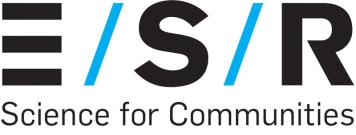
previous findings, the proposed research for 2017-20 will further quantify the benefits-risks
at the ecosystem level and on a crop rotation basis (typically about 30 years) to ensure that
‘biowastes to land reuse’ can be implemented in an informed and sustainable way to
maximise the beneficial reuse and sustainability of biosolids land application in forests. This
year our research has been focussed on the residual effects of biosolids-derived nutrients
and contaminants on tree health, nutrition and growth, and the soil and groundwater
quality. This information is required to develop decision support tools for assisting Tasman
District Council to monitor and manage land application of biosolids in a way that minimises
the risks and maximise the benefits. Our research will facilitate the implementation of
sustainable biosolids management practices for enhancing soil fertility and functions (e.g.
carbon sequestration), forest productivity and ecosystem service, reducing the impact of
biosolids application on environmental quality (soil, surface water and groundwater), and
maintaining the ecological, recreational and cultural values of Rabbit Island.
Ecotoxicology
The recently funded 5-year MBIE Endeavour Emerging Organic Contaminants (EOCS) project
is a great example of the strength of the multi-disciplinary CIBR team to address new issues.
Our expertise in ecotoxicology, environmental chemistry, microbiology, social science and
mātauranga Māori was key to develop the successful proposal. The CIBR member’s track
records and extended network of contacts with regional councils, industry, central
government agencies and international experts enabled us to develop a sound strategy
required to successfully secure MBIE funding. We continue to work with our existing Ngāi
Tahu partners in Southland, one of the study sites and built a new partnership with Te
Kawerau-ā-Maki in Auckland. That provides us with sites that cover the main land use
activities. The structure of the project includes the successful development of a National
Strategy to manage EOCs funded by an Envirolink Medium Advice grant and a National
Advisory Panel, with members from Regional Councils, MfE, MPI, EPA, iwi and industry. This
sound structure also helped us with other initiatives to address the topical issue of
microplastics in the environment. That assisted the completion of an ESR-led MBIE
Endeavour proposal to characterise and manage the risk of microplastics in New Zealand.
Social & Cultural Research
Waste production at Te Pā has been documented and achievable outcomes of reuse,
recycling, and recovery have been discussed with school staff. Examples of composting
(open air and vermicomposting) operate within the school and a novel approach to
vermicomposting has been outlined to staff with very favourable responses. Staff have been
at the forefront of the development of green cleaning products for the whole learning village
to reduce the use of chemical cleaners and to replace them with lower polluting residuals
whilst retaining efficacy.
A previous successful CIBR case-study of community engagement in Kaikoura that focussed
on the reuse of 1500 tonnes of aged biosolids was completed. The report was tabled and
accepted at a meeting of the Kaikoura District Council. The report which provided
community based solutions for the reuse was to be acted upon by the council but this never
occurred. Recent employment changes in the council owing to the effects of the November
2015 earthquake have seen the council wishing to revisit the decisions of the community
and proceed with their wishes.
Reuse of Greywater and Solid biowaste
The CIBR team at LEI and ESR is undertaking a project to investigate collaborative and
15
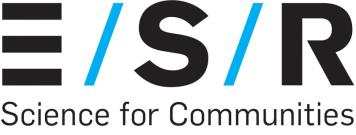
sustainable solutions for the biosolids generated by small communities of the lower North
Island. The biggest challenge of this work resides in the engagement with multiple councils,
community and iwi groups, and stakeholders. The project is advancing in the next weeks a
first trial to test the potential use of biowaste for growing native plants in nurseries will be
set up.
ESR and BRANZ has collaborated in a project to study microbial water quality of greywater in
residential and commercial buildings, and potential reuse options. Results are highly
variable, so not strong conclusions can be arisen for comparing the greywater quality in
residential versus commercial buildings.
Virus and organic contaminants removal in wastewater
We are focused on optimising virus removal in wastewater systems through a sustainable
and low cost approach. Within this remit we are enhancing the understanding of the
complex mechanisms existing in wastewater that have the potential for virus and organic
contaminants removal. Our work has investigated virus removal efficiencies of wastewater,
particularly the effect of controlled pH and dissolved oxygen (DO) on virus removal, in the
presence and absence of sunlight. By maintaining waste stabilization ponds (WSP) with high
pH and DO levels efficient removal of virus can be achieved using these sustainable,
economic treatment methods.
We are currently investigating the efficacy of high rate algal ponds, HRAP (collaboration with
NIWA, Rupert Craggs and Jason Park) for pathogen removal. While the research is ongoing
at present we have found, when combining summer and winter data so far collected, that
indicator
E. coli showed at least 2 Log removal through HRAP but most removal occurred in
the maturation ponds following the HRAP. Viral indicator, f-RNA bacteriophage showed over
2 Log removal but again most occurred in the maturation ponds. When looking at the
pathogens themselves there was little removal by either HRAP or maturation ponds with < 1
Log removal occurring. The results generated so far need to be investigated further,
including variation between summer and winter and loading rate differences. Overall,
however, it does again point to the risk of relying on traditional bacterial (or bacteriophage)
for predicting pathogen removal efficiencies in wastewater.
Another highlight from this year has been the completion of two masters’ theses. The first
investigated the use of coral sands as a low cost option for treatment of septic tank effluent
in the Pacific. The other master’s thesis successfully submitted this year was an investigation
of the virus transport and removal potential from septic tanks through disposal fields in New
Zealand. Finally,
[Withheld under section 9(2)(a) of the OIA] is in the final stages of her PhD
thesis which has discovered enzymes capable of virus reduction in wastewater.
[Withheld
under section 9(2)(b)(ii) of the OIA].
16















